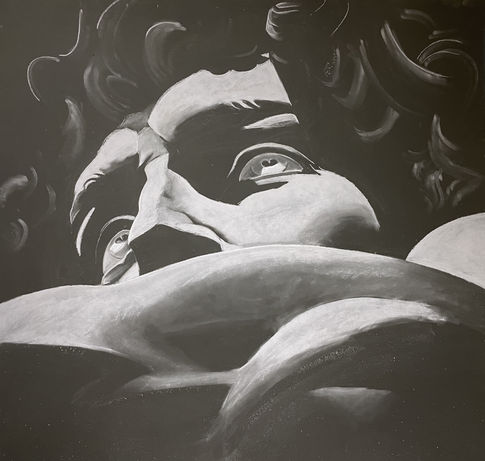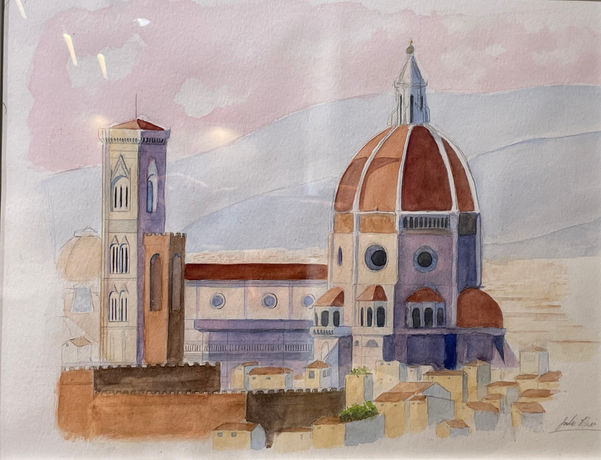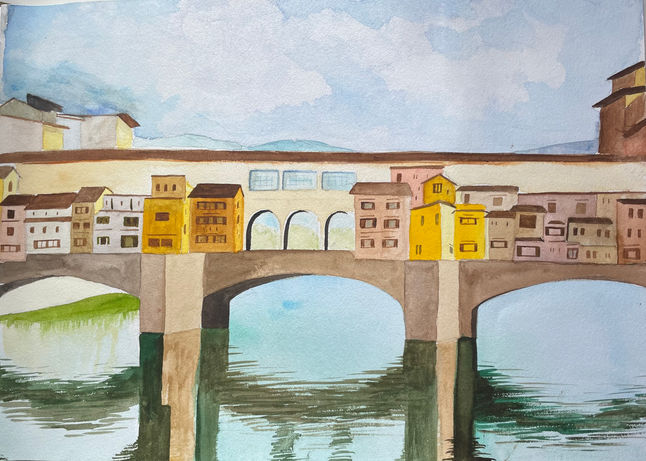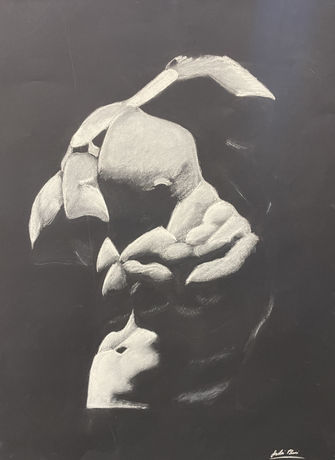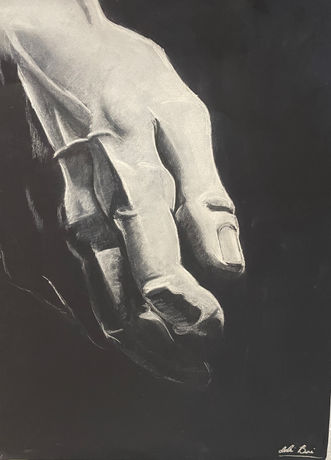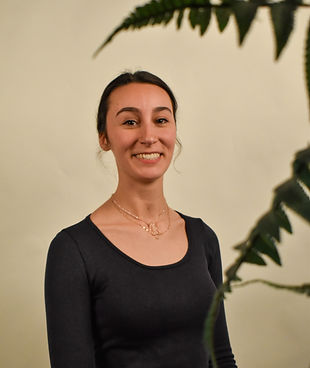
Julia Buoni
BA 2D Studio
Last spring, I studied abroad in Florence, Italy, for three months, and it was an unforgettable experience. Florence, known as the "capital of the arts" and the "jewel of the Renaissance," is filled with artistic inspiration at every turn. The city's architectural beauty and its stunning, lifelike statues from centuries past can be found throughout its streets. I have always had a passion for studying the history of sculpture and the development of creating lifelike figures out of stone, so seeing these famous statues in person was truly meaningful to me.
Months later, when I returned home, I was surprised to find that I remembered the strangers I encountered on my walks to class just as vividly as the iconic sculptures. A tightrope-walking clown outside my apartment window, a chef making pizza by scratch, and various other unique individuals captured my attention as much as the renowned artwork of Florence did. When it came time to plan my exhibition back in the U.S., I wanted to share a piece of my experience in Florence.
As any traveler would, I was initially excited to experience the renowned artwork and iconic landmarks of Florence—those picture-perfect sights that everyone anticipates. When we travel, there are certain attractions we seek out, ones that are universally recognized and deserve significant attention. However, I have come to realize that the true essence of a place often lies in the quieter moments—the everyday people we pass by and the shared interactions with strangers—that are equally deserving of recognition.
For my exhibition, I wanted to bring to life my memories of Florence, contrasting large black and white drawings of classical statues I saw and smaller watercolors of the people/architecture of the city itself. The statue drawings are intended to be dramatic, utilizing chiaroscuro techniques of high contrast to command attention. I wanted the classical artworks to immediately capture the viewer’s gaze, particularly the large drawing of David, symbolizing the grandeur of these historic masterpieces that visitors expect to find in Florence. Naturally, these works are given the most visual weight.
In contrast, the watercolor drawings are smaller and less refined but are full of color and life. These vibrant watercolors represent my joyful memories of the people and sights of Florence that I still remember today. By showcasing both the classical artworks and the everyday sights of the city, my aim is to demonstrate that both are equally significant and memorable to me.
